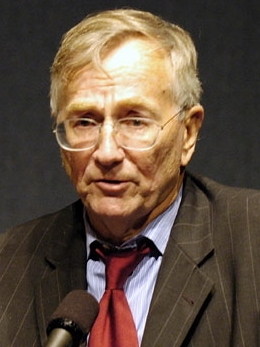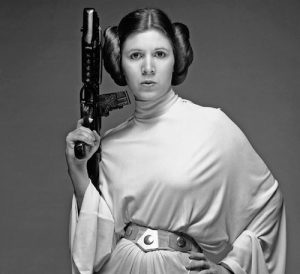What was originally described to the American people as a major victory during the Vietnam War only turned out to be one of the most heinous war crimes in the history of the United States. On the morning of March 16, 1968, between 347 and 504 Vietnamese civilians were raped, tortured, and murdered by U.S. soldiers of Charlie Company, 23rd Infantry (Americal) Division. My Lai was a cluster of hamlets of Son My village, nicknamed “Pinkville” by the division’s soldiers because of the concentration of Communist sympathizers and Viet Cong (VC) activity in the area.1 The murder that day of unarmed civilians went on for hours as members of the Task Force Barker burned every hamlet in sight. The numbers of civilians killed would’ve been a higher number if it weren’t for helicopter pilot Hugh Thompson Jr.2 The truths about what happened at My Lai were kept secret by the military, and would have remained secret, were it not for the freelance reporter Seymour Hersh, who exposed the horrible truths of what occurred on that day of the massacre, as well as the equally infamous cover-up.

Task Force Barker was a battalion-sized strike force in the 11th Infantry Brigade that stormed the region of My Lai performing their search-and-destroy operation, and later labeled the outcome as just another statistical victory for the military. Nearly four months after the atrocity of My Lai, stories and accounts were being leaked out.3 Different accounts of what took place during the hours of the My Lai Massacre show that groups of civilians were being lined up and mowed down by machine guns led by Lieutenant William Calley Jr. Children were used as target practice, according to an account from an ex-GI that stated “a tiny infant, barely of crawling age became the object of a marksmanship contest.”4 At the same time, women were raped and older men were grouped up around ditches to be murdered. Lieutenant Hugh Thompson Jr. was the pilot of the Hiller OH-23 Raven helicopter in Task Force Barker providing a sweep of the area until realizing that what was taking place below him wasn’t a war but a massacre. Hugh Thompson landed his helicopter between a group of soldiers and civilians and told his gunmen that if another soldier killed anyone else, his men were to fire on those soldiers. Toward the end of the massacre, at 3:55 p.m., Task Force Barker’s log of kills was reported to be all Viet Cong soldiers, but in reality they had been My Lai village’s women, young children, and older men.5
The American people had been told that My Lai was a victory for the American Military, but what was being told was only covering up the atrocity that had taken place. As news started to leak out about a possible cover-up, Lieutenant William R. Peers was chosen to secretly gather information on what had happened at My Lai by General William Westmoreland, Commanding Officer in Vietnam. On November 24, 1968, Peers was chosen to head all military investigations leading into My Lai by the Pentagon after letters from Ronald Ridenhour, a discharged Vietnam veteran, had surfaced.6 Ronald Ridenhour wrote in these letters wanting “a widespread and public investigation on this matter,” with Ridenhour receiving information on what had happened in My Lai from Charlie Company members who partook in the killings and who failed to report anything to their military superiors. These stories then became public and accusations were brought up against the officers and enlisted men of the units involved in the killings and the cover-up.7

The real truths of My Lai were uncovered with the many testimonies of the soldiers of the platoon and its military officers. The American people wanted more answers as to what had happened in My Lai, which led Seymour Hersh to investigate beyond what was already buzzing. Hersh was tipped off to the My Lai story by an antiwar activist who happened to be an attorney familiar with one of the soldiers in Charlie Company. Hersh said that he approached an aide to the army chief of staff about the story, and was given Lieutenant William Calley Jr.’s name. Hersh was granted access by the Army to visit with Lieutenant Calley, who was being held in prison for the accusations of murdering civilians in My Lai. During these visits, Hersh discussed the killing of innocent Vietnamese civilians from details given from Calley, who ultimately led the massacre by murdering hundreds of civilians.8 U.S. Army Lieutenant Colonel Frank Barker Jr. was the commanding officer of Task Force Barker. He ordered Captain Ernest Medina to pass the word on to Calley to fire on the hamlets of My Lai. As the story grew against Calley, the Pentagon knew this criticism against the military must be put to an end, as this was an obvious case of a cover-up.9 The investigation on Charlie Company GIs weren’t being done by the inspector general anymore, but rather by a newly organized office of the Criminal Investigation Division.

An infamous picture was released by U.S. Army photographer, Ronald Haeberle, showing many dead women and children lying on the side of a dirt road murdered. Haeberle was the photographer who accompanied the men of Charlie Company that day. There were many piles of bodies like the ones depicted in the photo that soldiers had tried to cover with straw. These photos were the real truths of what happened in My Lai that these soldiers failed to report to higher ranking officials. A military source had told Hersh, “nobody could believe that senior officers could know about it and not say anything, the early emphasis was on Calley and Medina.”10 These stories created a world-wide outcry and the Army knew they needed to create a panel to investigate deeper. Seymour Hersh had all the information he needed to break the story of My Lai wide open to the American public. Many news agencies refused to run Hersh’s original reporting, except for Dispatch News Service, who first aired the story on November 12, 1969. The story was aired on television, and the next morning it was printed in dozens of newspapers across the country. The story revealed that U.S. Army soldiers had brutally murdered more than five-hundred civilians.11
More than three years after the My Lai Massacre, Hersh was provided with thirty volumes of testimony, documents, and other materials from the Peers Panel, evidence that all pointed back to Lieutenant William Calley Jr. and Captain Ernest Medina, along with their superiors, Colonel Oran K. Henderson and Major General Samuel Koster. Lieutenant William Calley Jr. was the only one not acquitted of his charges. In a trial after the testimony’s of the different battalion soldiers, Calley was found guilty of premeditated murder of 109 civilians by a military jury and sentenced to life in prison. Captain Ernest Medina was acquitted of his charges after denying giving the orders to Calley. Colonol Henderson and Major General Koster’s charges were also acquitted.12 Lieutenant William Calley Jr. spent a day in prison and was released by President Nixon to be put under house arrest while Calley’s case was being appealed. Calley had his sentence reduced and only served three and a half years on house arrest.

After the story broke over the My Lai Massacre cover-up, the antiwar movement gained new momentum. Antiwar protests mushroomed all throughout the country, predominantly on college campuses. While tensions on college campuses were high, demonstrations at one of them, Kent State in Ohio, led to the killing of four college students, shot by the Ohio national guard. Hersh’s editor at the New York Times during the 1970s has said that Hersh “exposed some of the most despicable behavior on the part of public officials” and “made Americans aware when our leaders don’t measure up to the values expressed in all the songs we sing and pledges we make.” Hersh later went on to win the Pulitzer Prize for his investigating and writing to uncover what happened in My Lai.13 Americans were shocked that their military committed such a crime that was covered-up only to be exposed a year later. Many Americans who had once supported the war began to lessen their support, and were often critical of the military. The pullout of American troops and the ending of U.S. involvement in the war came in 1973.14
- Encyclopedia of the Vietnam War: A Political, Social, and Military History, 2011, s.v, “My Lai Massacre.” ↵
- Encyclopedia of the Vietnam War: A Political, Social, and Military History, 2011, s.v, ” Thompson, Hugh Jr.” ↵
- Encyclopedia of the Vietnam War: A Political, Social, and Military History, 2011, s.v, “Barker, Frank Akeley Jr.” ↵
- Seymour Hersh, Cover-Up: the Army’s secret investigation of the massacre at My Lai 4 (New York: Random House, 1972), 15. ↵
- Seymour Hersh, Cover-Up: the Army’s secret investigation of the massacre at My Lai 4 (New York: Random House, 1972), 19. ↵
- Seymour Hersh, Cover-Up: the Army’s secret investigation of the massacre at My Lai 4 (New York: Random House, 1972), 231. ↵
- Seymour Hersh, Cover-Up: the Army’s secret investigation of the massacre at My Lai 4 (New York: Random House, 1972), 5. ↵
- The Literature of Propaganda, 2013, s,v. “My Lai: 4 A Report on the Massacre and Its Aftermath.” ↵
- Seymour Hersh, Cover-Up: the Army’s secret investigation of the massacre at My Lai 4 (New York: Random House, 1972), 229. ↵
- Seymour Hersh, Cover-Up: the Army’s secret investigation of the massacre at My Lai 4 (New York: Random House, 1972), 228. ↵
- Milestone Events Throughout History, 2014, s,v. “Seymour Hersh Breaks the Story of the My Lai Massacre”, 386-388. ↵
- Seymour Hersh, Cover-Up: the Army’s secret investigation of the massacre at My Lai 4 (New York: Random House, 1972), 7. ↵
- Seymour Hersh, My Lai 4: a report on the massacre and its aftermath (New York: Random House, 1970). ↵
- Milestone Events Throughout History, 2014, s,v. “Seymour Hersh Breaks the Story of the My Lai Massacre”, 386-388. ↵



50 comments
Daniel Linstead
Reading this was tough. It is horrible to think that in society we have people that are so sick that they would do something like this. Taking the life of someone is just diabolical, but the fact that they used toddlers as target practice was just next level sick in the head. I think this article did a good job capturing the emotions of the reader to make them feel this way.
Crystal Baeza
This article was extremely powerful with the information and images posted. I never knew about the massacre and upsets me how they tried to cover up the mess. I can’t believe how many historical events have taken place over the years and not many hear about them. It’s good to know justice was served for those lives taken too soon but doesn’t help the main issue. I’m glad the story is getting told and others are able to read about the struggles other countries faced overtimes. It makes you think about other events that may take place at this very moment but we won’t know until years later.
Eloisa Sanchez Urrea
I was left speechless after reading this article. The description of the massacre that took place this day reminded me of the Holocaust, and that is what I found truly scary and disgusting. Their use of images also really helped in getting across the atrocities of the massacre. This was a very well-written article, and after reading it one can only help but wonder what other horrible crimes we do not know about.
Belene Cuellar
I cannot believe this horrible thing happened in our military. The fact that they went through all the trouble to cover it up shows that they themselves were ashamed of their actions. Thank goodness someone chose to stand up and speak out against the cruelty that went on in the military. I just hope that the military learned from this mistake and have improved over the years, but I know its a long shot to believe that nothing else has been covered up so far.
Annissa Noblejas
The despicable actions of the united states military on the Vietnamese civilians is a sobering lesson in what should never be condoned under a banner of warfare. There was nothing warlike or justifiable in these actions. I believe more of the involved personnel should have been punished and higher leadership should not have been able to hide behind denial of involvement. The attempts to cover up what occurred only served to spread ever widening distrust concerning the entire campaign.
Avery Looney
Before reading this article I had never heard about the event that took place in My Lai. It is disgusting that our country would do something like this and try to cover it up. The actions of the US military on this day are absolutely despicable and it is even worse that those held responsible were not punished enough for their actions. This article does a great job of explaining what happened that day and is very well researched.
Daniela Cardona
As I read the first paragrapgh of this article I did not know if I could continue. The idea of toddlers being used as target practice absolutely broke my heart. On top of that, the horrible treatment of adult men and women really hit me too. This article overall was pretty strong and had very powerful use of pictures. I am so glad that the secrets got out and justice was brought to the table. I sincerely hope it hindered any other atrocities like this going on in the world. As I continues to read, I began to realize just how intertwined all of history is. The anti war movements and Kent State rallies that came about this are all things I have learned more about through reading other articles. This made a lot of connections in my mind and really opened my eyes on how world events can really be a domino effect.
Richard Morales
Although it is sad to learn of, this article was very well written and provided many details on this horrific event. I had no knowledge of the My Lai massacre prior to reading this article and I am disgusted to learn that our military committed such vile acts. I cannot imagine what the soldiers were thinking to blindly follow such cruel commands. The picture that accompanied the article was stomach turning but was necessary to document the evil actions of those men American soldiers in Vietnam.
Harashang Gajjar
The revelations of the My Lai massacre caused morale to plummet even further, as GIs wondered what other atrocities their superiors were concealing. On the home front in the United States, the brutality of the My Lai massacre and the efforts made by higher ranking officers to conceal it exacerbated antiwar sentiment and increased the bitterness regarding the continuing U.S. military presence in Vietnam.
Bictor Martinez
What an interesting article. The My Lai was trying to cover up their atrocities from what they had caused by creating stories only to not get hated by the American people. They thought they could get away with the mistreating of the innocent Vietnamese civilians however, they thought wrong. The picture that shows women and children dead on the road is very powerful because it shows how cruel the My Lai really were.